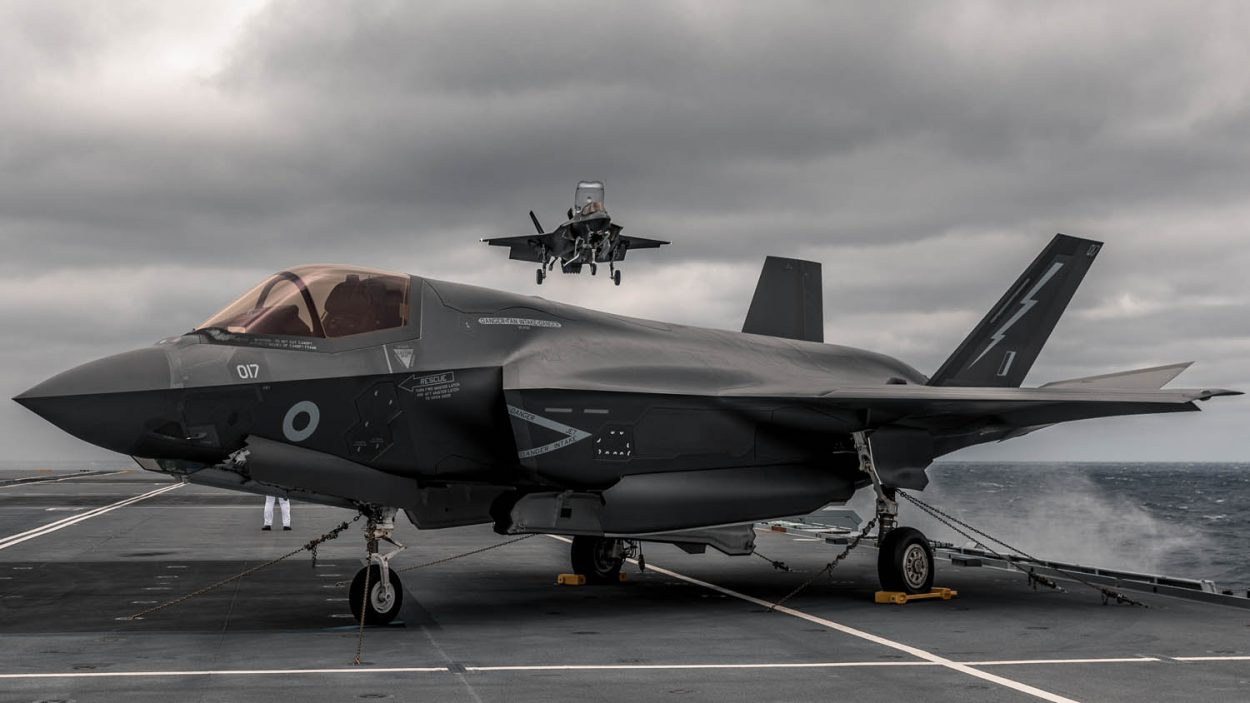The United Kingdom has reiterated its pledge to acquire 138 Lockheed Martin F-35 Lightning combat aircraft despite previously scaling back from the complete Program of Record (PoR) quantity.
In a recent parliamentary exchange, the United Kingdom underscored its unwavering dedication to procuring 138 F-35B aircraft, signaling an uncompromising commitment to one of its arsenal’s most critical defense programs.
James Cartlidge, Minister of State at the Ministry of Defense, provided a detailed response elucidating the UK’s stance on the F-35 program, dispelling any ambiguity that may have clouded previous discussions.
The clarification comes at a crucial juncture, as speculation swirled following the 2021 Defense Command paper, which lacked explicit reaffirmation of the UK’s commitment to the 138 aircraft fleet.
This omission led to conjecture regarding a potential scaling back of the UK’s involvement in the program. However, Cartlidge’s statement provided a much-needed assurance of continuity and steadfastness in the UK’s defense procurement strategy.
The procurement process for the F-35 aircraft involves all partner nations, including the UK, placing orders through the Joint Program Office in low-rate initial production lots.

Cartlidge outlined that the average time between placing multinational orders and delivering to customer nations ranged from two to four years. Such transparency in the procurement timeline enhanced understanding and confidence in the program’s execution.
Moreover, Cartlidge referred to previous parliamentary responses to illuminate the UK’s specific delivery schedules for F-35 aircraft. This level of detail is crucial in assuring stakeholders of the government’s commitment to transparency and accountability in defense procurement.
The statement also addressed recent uncertainties surrounding the UK’s F-35 procurement plans, particularly the lack of explicit mention of the 138 aircraft commitment in the Defense Command paper.
Instead, the paper hinted at a desire to expand the fleet beyond the initial 48 F-35Bs ordered. Moreover, reports have suggested that discussions would commence for an additional 27 F-35Bs, aiming for a fleet totaling 74 aircraft by the early 2030s.
These figures included adjustments for losing an aircraft overboard from HMS Queen Elizabeth in 2021. Cartlidge’s reaffirmation of the 138-aircraft target dispelled doubts about the UK’s long-term strategic vision for its air capabilities.
Ambiguities Regarding Delivery Timelines
This clarity in procurement intentions strengthens the UK’s position within the multinational F-35 program and bolsters confidence among allies and industry stakeholders.
In his recent statement, Cartlidge also said that while the UK remained steadfast in its commitment to 138 F-35 aircraft, precise delivery timescales for subsequent production lots would be determined in due course.
This assurance comes at a crucial time, especially considering previous concerns raised by top Lockheed Martin executives regarding the British government purposefully delaying delivery of 47 F-35B aircraft.
In December 2022, Paul Livingston, chief executive of Lockheed Martin UK, disclosed a decision to slow the pace of F-35 deliveries related to combat air matters.
He clarified that the delay was not due to production issues on Lockheed Martin’s end but rather the British Ministry of Defense’s timing in exercising their options within the current production lots.
The fulfillment of the second tranche of F-35B orders, which included an additional 27 aircraft, is projected to be achieved by 2033. If deliveries begin in 2026 after the completion of tranche one delivery in 2025, it will result in an average delivery rate of fewer than four aircraft annually.
Despite financial challenges stemming from increases in US foreign exchange rates and rising costs for weapons integration, Livingston highlighted a significant decrease in the recurring flyaway unit cost for the B variant of the F-35.
This reduction, amounting to 51 percent since the program’s inception, reflected a cost that is now 39 percent lower than the first UK delivery in 2012.
Meanwhile, in October 2023, a parliamentary report raised concerns about the adequacy of the Royal Air Force’s aircraft fleet, particularly the planned fleet of F-35 stealth fighters.
At the time, the report questioned whether cuts in the planned fleet would leave enough aircraft to counter peer adversaries effectively.
One proposed solution was to increase the procurement of F-35Bs. However, the committee highlighted concerns regarding maintenance costs despite the reduced acquisition cost of the aircraft, which now stands at US$101 million.
These challenges underscored the complexities of balancing procurement decisions with long-term operational requirements in defense planning.
- Contact the author at ashishmichel(at)gmail.com
- Follow EurAsian Times on Google News